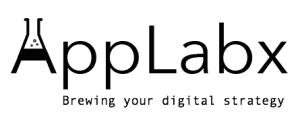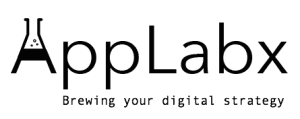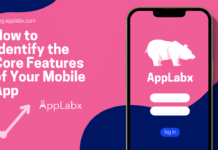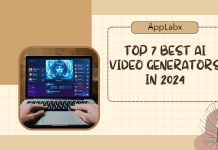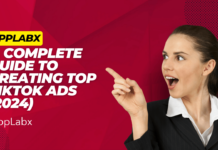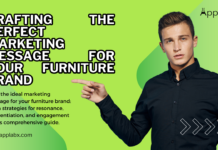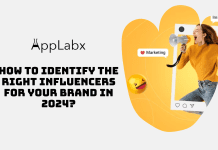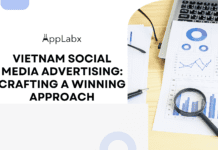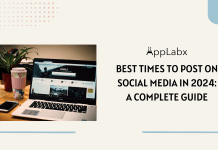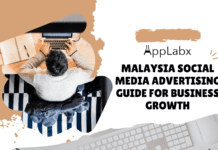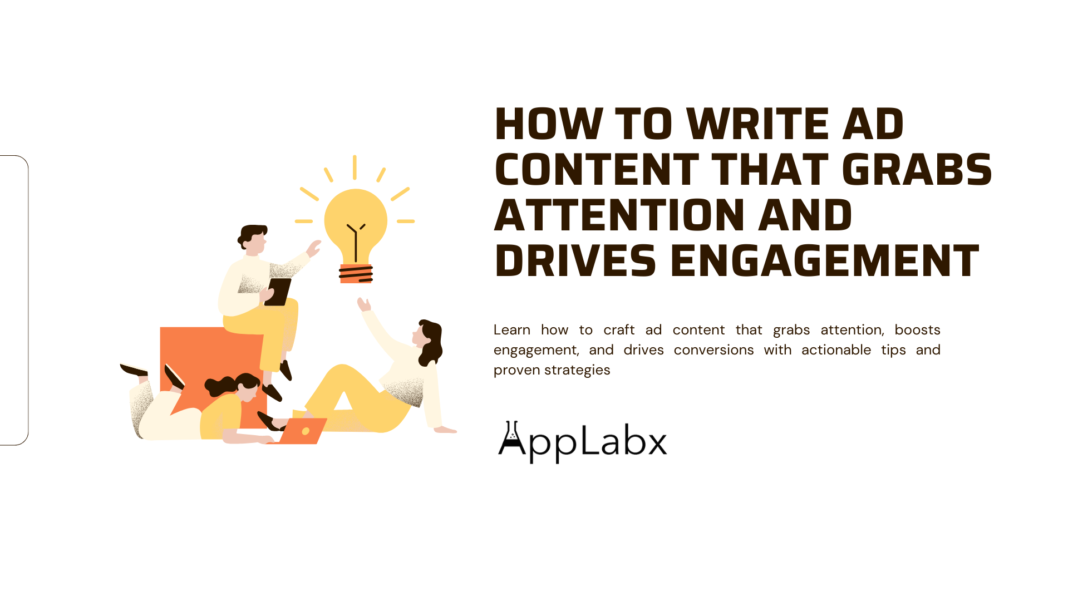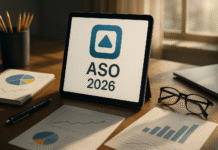Key Takeaways
- Understand your audience deeply to create personalized ad content that resonates and solves their problems.
- Use compelling headlines, strong CTAs, and emotional appeal to capture attention and drive action.
- Continuously test and optimize your ads based on performance data to maximize engagement and conversions.
In today’s fast-paced digital landscape, grabbing your audience’s attention is no small feat.
With countless ads vying for eyeballs on every platform—whether it’s social media, search engines, or email—it’s easy for your content to get lost in the noise.
However, crafting ad content that not only stops the scroll but also drives meaningful engagement is both an art and a science.
The question is: How do you create ads that truly stand out and make your audience take action?
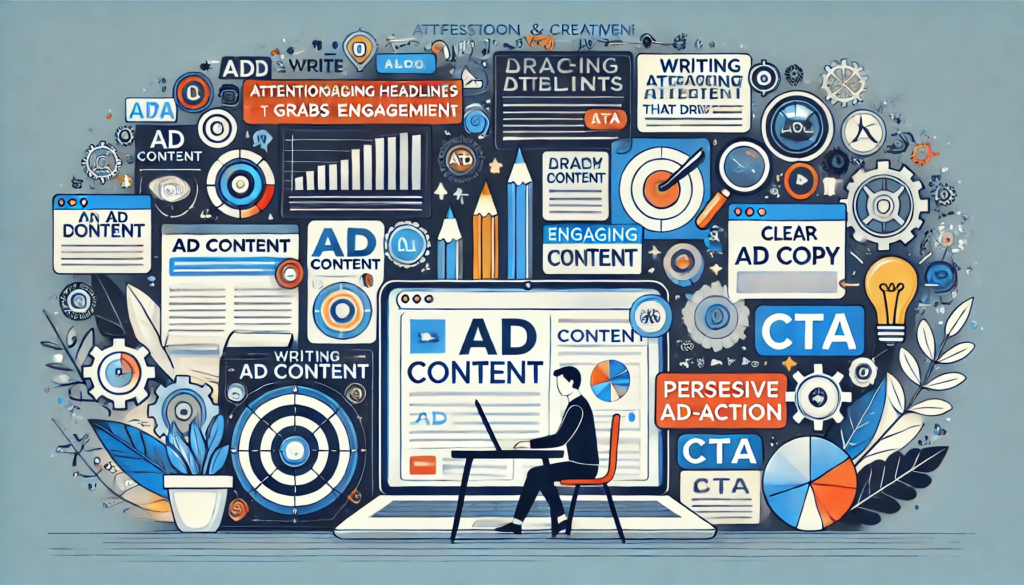
The ability to write compelling ad content has become a critical skill for marketers, business owners, and copywriters alike. It’s not just about catchy phrases or colorful images—it’s about connecting with your audience on a deeper level.
Great ad content resonates, informs, and inspires action. Whether the goal is to increase clicks, generate leads, or boost conversions, the success of your ad hinges on its ability to grab attention and keep it.
In this blog, we’ll dive into the proven strategies and techniques for creating ad content that achieves these goals. From crafting powerful headlines to writing engaging copy tailored to your audience, you’ll learn everything you need to know to make your ads unforgettable.
We’ll explore the psychology behind what captures attention, how to write for different platforms, and why a strong call-to-action (CTA) can make or break your campaign.
But why is this so important? Consider this: studies show that the average person is exposed to between 4,000 to 10,000 ads daily, yet only a tiny fraction of those ads manage to leave a lasting impression.
If your ad isn’t grabbing attention in the first few seconds, you’re already losing potential customers. On the flip side, ads that are well-crafted can significantly impact brand awareness, click-through rates, and overall return on investment (ROI).
This guide is packed with actionable insights and examples to help you create ad content that stands out from the crowd. Whether you’re crafting a headline for a Google Ad, writing copy for a Facebook campaign, or designing an email ad, these tips will ensure your message not only grabs attention but also drives the results you’re looking for.
So, if you’re ready to transform your ad-writing skills and start seeing real engagement from your campaigns, let’s dive in. By the end of this blog, you’ll have a clear roadmap for writing ad content that doesn’t just get noticed—it gets results.
But, before we venture further, we like to share who we are and what we do.
About AppLabx
From developing a solid marketing plan to creating compelling content, optimizing for search engines, leveraging social media, and utilizing paid advertising, AppLabx offers a comprehensive suite of digital marketing services designed to drive growth and profitability for your business.
AppLabx is well known for helping companies and startups use SEO to drive web traffic to their websites and web apps.
At AppLabx, we understand that no two businesses are alike. That’s why we take a personalized approach to every project, working closely with our clients to understand their unique needs and goals, and developing customized strategies to help them achieve success.
If you need a digital consultation, then send in an inquiry here.
How to Write Ad Content That Grabs Attention and Drives Engagement
- Understanding the Importance of Attention-Grabbing Ad Content
- Key Elements of Compelling Ad Content
- Crafting Persuasive Copy for Different Platforms
- Using Strong Call-to-Actions (CTAs)
- Testing and Optimizing Your Ad Content for Maximum Engagement
- Common Mistakes to Avoid When Writing Ad Content
1. Understanding the Importance of Attention-Grabbing Ad Content
In a world where audiences are bombarded with thousands of ads daily, standing out is more challenging than ever. To cut through the clutter, your ad content must grab attention immediately and hold it long enough to inspire action. But why is attention-grabbing content so critical? Let’s explore its significance and how it influences the success of your campaigns.
What Does It Mean to Grab Attention?
- First Impressions Matter: Your ad has only a few seconds—often less than 3—to capture the viewer’s interest. If your content doesn’t resonate immediately, it’s likely to be ignored.
- Breaking the “Scroll Barrier”: Ads that stand out visually or textually compel users to stop scrolling, pause, and engage.
- Example: A vibrant ad featuring a bold headline like “50% Off Today Only!” paired with an eye-catching image is more likely to grab attention than a plain, text-heavy ad.
Why Grabbing Attention Is Crucial for Engagement
- Competition Is Fierce:
- On platforms like Facebook and Instagram, ads compete against personal updates, videos, and other promotional content.
- If your ad doesn’t stand out, it will blend into the background and fail to drive engagement.
- Example: A humorous, meme-inspired ad might outperform a traditional promotional post simply because it stands out in a feed filled with similar content.
- The Foundation of Engagement:
- Attention is the first step in the engagement funnel. Without capturing attention, there’s no chance to communicate your message or convert your audience.
- Example: A YouTube pre-roll ad with an engaging hook like, “Are you tired of wasting money on bad coffee?” immediately piques curiosity and encourages viewers to keep watching.
- Boosts Key Metrics:
- Ads that grab attention see higher click-through rates (CTR), better engagement metrics (likes, shares, comments), and improved conversion rates.
- Attention-grabbing content also reduces ad fatigue, keeping your audience interested over time.
The Psychology Behind Attention-Grabbing Ads
Understanding how the human brain processes information can help you create ads that capture attention effectively.
- Visual Hierarchy:
- People process visuals 60,000 times faster than text.
- Bright colors, bold typography, and high-quality images immediately draw the eye.
- Example: Coca-Cola uses bold red colors and simple text to ensure their ads are recognizable and eye-catching.
- Curiosity Triggers:
- Open loops or incomplete information intrigue viewers, compelling them to engage to find answers.
- Example: An ad with the headline “What’s the secret to doubling your sales in a month?” encourages curiosity and clicks.
- Emotional Appeal:
- Ads that evoke emotions—whether happiness, nostalgia, or urgency—are more memorable and drive higher engagement.
- Example: Nike’s “Just Do It” campaigns often feature inspirational stories, creating an emotional connection with their audience.
How Attention Impacts Engagement and Conversions
- Building Trust and Awareness:
- Capturing attention is the first step in building brand awareness and trust. People engage more with ads from brands they recognize.
- Example: A quirky ad campaign like Old Spice’s “The Man Your Man Could Smell Like” not only grabbed attention but also increased brand awareness exponentially.
- Driving Action:
- Ads that successfully grab attention often include strong calls-to-action (CTAs), encouraging viewers to take the next step.
- Example: A food delivery ad featuring a headline like “Hungry? Order Now and Get 20% Off!” combines attention-grabbing visuals with a compelling CTA, driving immediate orders.
- Increasing ROI:
- Attention-grabbing ads reduce wasted impressions, ensuring that your message reaches the right audience effectively.
- Investing in high-quality, engaging content often leads to a higher return on ad spend (ROAS).
Examples of Attention-Grabbing Ad Campaigns
- Dove’s Real Beauty Campaign:
- Focused on authenticity and inclusivity, this campaign featured real women instead of models, grabbing attention through relatability.
- Result: A significant increase in engagement and brand loyalty.
- Burger King’s Whopper Detour Campaign:
- Used geofencing technology to direct McDonald’s customers to nearby Burger King locations for a $0.01 Whopper.
- The unique concept grabbed attention and generated buzz across social media, driving millions of app downloads.
- Spotify Wrapped Campaign:
- Personalized data shared with users encouraged them to post their stats on social media.
- The campaign grabbed attention through personalization and encouraged organic engagement.
Key Takeaways
- Grabbing attention is not optional; it’s a prerequisite for engagement, brand awareness, and conversions.
- Combining visual appeal, emotional resonance, and curiosity triggers can significantly improve the effectiveness of your ad content.
- Learning from successful campaigns and tailoring your ads to your audience ensures your message doesn’t just grab attention—it drives results.
By understanding why attention-grabbing content matters and how it impacts engagement, you’re already on the path to creating ads that leave a lasting impression and inspire action.
2. Key Elements of Compelling Ad Content
Creating compelling ad content is about more than just flashy images or catchy phrases—it’s about delivering a message that resonates, persuades, and drives action. To achieve this, your ads must incorporate specific elements that grab attention and connect with your target audience. Let’s dive into these key elements and how to master them.
1. A Powerful and Attention-Grabbing Headline
The headline is the first thing viewers notice, making it critical to capture their attention immediately.
- Keep It Short and Impactful:
- Aim for headlines that are 6-10 words long.
- Use active language and power words like “Free,” “Now,” “Exclusive,” or “Limited-Time.”
- Example: “Unlock Your Dream Vacation – 50% Off Today!”
- Address a Problem or Need:
- Use the headline to identify a pain point or desire of your audience.
- Example: “Tired of Waiting? Get Your Food Delivered in 30 Minutes!”
- Include Numbers or Statistics:
- Headlines with numbers are proven to perform better because they suggest clarity and specificity.
- Example: “7 Steps to Skyrocket Your Sales in 2024.”
2. A Clear and Compelling Value Proposition
Your audience needs to know why they should care about your product or service within seconds.
- Answer the Question: “What’s In It for Me?”
- Focus on the benefits, not just the features.
- Example: Instead of “Our mattress is made of memory foam,” say “Sleep Better Every Night with Our Pressure-Relieving Memory Foam Mattress.”
- Highlight Unique Selling Points (USPs):
- Showcase what sets your product apart from competitors.
- Example: “The Only Smartphone with a 48-Hour Battery Life.”
- Use Comparisons or Guarantees:
- Comparing your product to competitors or offering guarantees builds trust.
- Example: “Faster, Smarter, and 30% Cheaper Than Brand X!”
3. Eye-Catching Visuals or Multimedia
Visual content is processed faster than text, making it a crucial element of compelling ad content.
- Use High-Quality Images or Videos:
- Poor-quality visuals can harm credibility. Invest in sharp, professional visuals.
- Example: A fitness brand can use a video demonstrating a 30-second transformation workout.
- Incorporate Bold Colors and Contrasts:
- Bright, contrasting colors draw attention, especially on cluttered platforms like social media.
- Example: McDonald’s uses bold red and yellow in their ads to evoke excitement and hunger.
- Leverage Motion or Animation:
- Dynamic ads with animations or GIFs are more engaging than static images.
- Example: An animated ad showcasing the before-and-after results of a skincare product.
4. Emotional Appeal
Ads that evoke emotions are more likely to be remembered and shared.
- Tap Into Positive Emotions:
- Use joy, humor, or inspiration to create a connection.
- Example: Coca-Cola’s “Share a Coke” campaign personalized bottles with names, evoking happiness and connection.
- Leverage FOMO (Fear of Missing Out):
- Create a sense of urgency or exclusivity to drive immediate action.
- Example: “Last Chance! Offer Ends Tonight at Midnight!”
- Show Relatable Stories:
- Use storytelling to create an emotional bond with your audience.
- Example: A charity ad telling the story of a single individual impacted by their work.
5. Strong and Actionable Call-to-Action (CTA)
Your ad must tell viewers exactly what to do next in a way that’s clear and persuasive.
- Use Command Verbs:
- Start your CTA with verbs like “Get,” “Start,” “Claim,” or “Download.”
- Example: “Get Your Free Trial Today!”
- Create a Sense of Urgency:
- Encourage immediate action by including time-sensitive language.
- Example: “Sign Up Now—Only 24 Hours Left!”
- Be Specific About Benefits:
- Tie the CTA directly to the value they’ll receive.
- Example: “Start Saving on Your Energy Bills Today.”
6. Personalization and Target Audience Alignment
Tailoring your content to your specific audience increases its relevance and impact.
- Use Audience-Specific Language:
- Speak directly to your target demographic.
- Example: An ad targeting parents might say, “Give Your Kids the Learning Tools They Deserve.”
- Incorporate User Data:
- Use location, purchase history, or interests to personalize ads.
- Example: “Hey [Name], Ready to Plan Your Next Trip to [Destination]?”
- Address Pain Points Directly:
- Highlight solutions to problems that resonate with your audience.
- Example: A productivity app might advertise, “Say Goodbye to Missed Deadlines Forever!”
7. Proof of Credibility and Social Proof
People trust brands that demonstrate authority and reliability.
- Include Testimonials or Reviews:
- Showcase real customer experiences.
- Example: “Rated 4.8/5 by Over 10,000 Happy Customers!”
- Use Statistics and Data:
- Hard numbers help establish credibility.
- Example: “Over 1 Million Users Have Switched to Our Service.”
- Highlight Endorsements or Partnerships:
- Mention affiliations with recognizable brands or influencers.
- Example: “As Featured in Forbes and The New York Times.”
8. Platform-Specific Optimization
Each platform requires tailored content to maximize its effectiveness.
- Social Media:
- Use short, conversational copy and visuals that fit the platform’s style.
- Example: Instagram ads might include vibrant, lifestyle-focused imagery with minimal text.
- Search Engines (Google Ads):
- Focus on keywords and concise, benefit-driven headlines.
- Example: “Affordable Web Hosting – Start Your Site Today!”
- Email Campaigns:
- Write compelling subject lines and include personalized content.
- Example: “John, Here’s a Special Offer Just for You!”
Conclusion
Compelling ad content combines strong headlines, a clear value proposition, engaging visuals, emotional appeal, and an irresistible CTA. By understanding your audience and tailoring your ads to their needs, you can create content that grabs attention and drives meaningful engagement. The key is to combine creativity with strategy—because in advertising, it’s not just about being seen; it’s about being remembered.
3. Crafting Persuasive Copy for Different Platforms
Every platform has its own unique audience, tone, and engagement style. Crafting persuasive ad copy means tailoring your message to fit the platform while keeping your core goals intact. This ensures your ads not only capture attention but also resonate with your target audience, driving higher engagement and conversions. Let’s explore how to adapt ad copy effectively for different platforms.
1. Writing Persuasive Copy for Social Media Platforms
Social media is fast-paced and highly visual. Your ad copy must grab attention instantly while being conversational and relatable.
- Facebook:
- Key Characteristics: Focus on storytelling and community engagement. Use a mix of short and long-form copy depending on the context.
- Best Practices:
- Start with a strong hook that resonates emotionally or solves a problem.
- Use conversational language to build a connection.
- Pair text with attention-grabbing visuals or videos.
- Include a clear call-to-action (CTA) such as “Shop Now” or “Learn More.”
- Example:
- “Struggling to stay productive while working from home? Discover how our all-in-one planner can help you achieve your goals effortlessly. Click now to learn more!”
- Instagram:
- Key Characteristics: Focus on visual appeal with concise, punchy captions.
- Best Practices:
- Keep captions short and impactful (under 125 characters for maximum visibility).
- Use hashtags to expand reach and boost discoverability.
- Incorporate emojis to make the tone more playful and engaging.
- Add CTAs like “Swipe Up,” “Shop the Look,” or “Double-tap if you agree!”
- Twitter:
- Key Characteristics: Brief and direct due to the 280-character limit.
- Best Practices:
- Use sharp, attention-grabbing copy with a sense of urgency.
- Incorporate trending hashtags relevant to your audience.
- Add a CTA like “Get Yours Today!” or “Learn More Now!”
- LinkedIn:
- Key Characteristics: Professional tone with an emphasis on value and thought leadership.
- Best Practices:
- Highlight benefits and ROI for businesses or professionals.
- Use data or statistics to back up claims.
- Avoid overly promotional language; focus on solutions and expertise.
- Example:
- “Discover how [Your Service] can help your team boost productivity by 35%. Schedule a free demo today!”
2. Writing Persuasive Copy for Search Engine Ads (Google Ads)
Search engine ads need to be concise and keyword-optimized to align with user intent.
- Key Characteristics: Focus on delivering value while matching the searcher’s query.
- Best Practices:
- Incorporate high-intent keywords into headlines and descriptions.
- Highlight your unique selling points (USPs) like free shipping, discounts, or guarantees.
- Use ad extensions like site links or callouts to add more information.
- Include urgency or time-limited offers to encourage immediate clicks.
- Example:
- Headline 1: “Affordable Web Hosting – Start for Just $2.99/Month!”
- Headline 2: “24/7 Support + Free Domain Name Included!”
- Description: “Get secure, fast hosting with a 99.9% uptime guarantee. Limited-time offer—sign up now!”
3. Writing Persuasive Copy for Email Campaigns
Emails offer a direct and personalized way to engage your audience, making your copy critical for driving conversions.
- Key Characteristics: Tailored and conversational tone that aligns with the recipient’s interests.
- Best Practices:
- Write attention-grabbing subject lines to increase open rates.
- Example: “[First Name], Your Exclusive 25% Off Awaits!”
- Personalize the email with the recipient’s name or preferences.
- Focus on benefits rather than features in the body copy.
- End with a clear and enticing CTA like “Claim Your Discount” or “Join the Community.”
- Write attention-grabbing subject lines to increase open rates.
- Example:
- Subject Line: “Don’t Miss Out: Limited-Time Offer Inside!”
- Body Copy:
- “Hey [First Name], Ready to save big? For the next 48 hours only, enjoy 30% off our entire collection. Click below to shop now and transform your space with our premium designs.”
4. Writing Persuasive Copy for YouTube Ads
YouTube ads combine visuals with concise, engaging scripts to drive action.
- Key Characteristics: Focus on creating an immediate hook and aligning visuals with the script.
- Best Practices:
- Use an engaging hook within the first 5 seconds (to prevent viewers from skipping).
- Keep the script concise and focus on the key message.
- Include CTAs like “Click Below to Learn More” or “Subscribe Now.”
- Tailor the tone based on the ad type (e.g., skippable vs. non-skippable ads).
- Example:
- Hook: “What if we told you you could double your savings in just 30 days? Keep watching to find out how!”
- Body: “Our innovative budgeting app makes it easier than ever to track spending and grow your savings. Download now to get started!”
5. Writing Persuasive Copy for E-commerce Product Pages
Product pages require persuasive copy to convince visitors to make a purchase.
- Key Characteristics: Informative yet engaging descriptions that highlight the benefits.
- Best Practices:
- Use clear, descriptive headlines for product names and categories.
- Focus on benefits rather than just features.
- Include bullet points for easy readability.
- Add customer reviews or testimonials to build trust.
- Example:
- Headline: “Experience Comfort Like Never Before with Our Memory Foam Pillow”
- Bullet Points:
- Contoured design for optimal neck support.
- Made with hypoallergenic, breathable materials.
- 30-night trial with a money-back guarantee.
Conclusion
Crafting persuasive ad copy for different platforms requires a deep understanding of the platform’s audience, tone, and functionality. By tailoring your message and leveraging the strengths of each channel, you can maximize the impact of your ads and drive better engagement. Whether it’s a short Twitter post, a Google ad, or an engaging email, platform-specific strategies ensure your copy resonates and delivers results.
4. Using Strong Call-to-Actions (CTAs)
A strong call-to-action (CTA) is the cornerstone of any successful advertisement or marketing campaign. It serves as the decisive nudge that converts attention into action, whether it’s clicking a link, signing up, or making a purchase. Crafting an effective CTA requires clarity, creativity, and relevance to the audience’s needs. Let’s break down how to create CTAs that drive engagement and results.
1. The Importance of Strong CTAs
- Encourages Immediate Action:
- CTAs eliminate ambiguity, guiding users on the next step.
- Example: Instead of “Explore More,” use “Start Your Free Trial Today!”
- Boosts Conversion Rates:
- A well-placed and compelling CTA can turn potential customers into buyers.
- Example: E-commerce sites that use “Add to Cart” and “Checkout Now” often see higher conversion rates.
- Improves User Experience:
- Clear CTAs help users navigate content seamlessly, reducing friction.
2. Characteristics of a Strong CTA
- Clarity:
- Use precise, action-oriented language.
- Example: “Download the Guide” is better than “Learn More.”
- Urgency:
- Incorporate time-sensitive phrases to prompt immediate action.
- Example: “Sign Up Before Midnight to Get 50% Off!”
- Value-Oriented:
- Highlight the benefit of taking the action.
- Example: “Claim Your Free E-Book Today!”
- Personalization:
- Tailor CTAs to your audience’s preferences and pain points.
- Example: “Transform Your Fitness Journey—Start Now!”
3. Types of CTAs Based on Intent
a) Lead Generation CTAs
Designed to capture user information for future engagement.
- Examples:
- “Subscribe to Our Newsletter for Exclusive Tips!”
- “Download Your Free Checklist Today!”
- Best Practices:
- Use enticing offers, such as free trials or resources.
- Minimize form fields to reduce friction (e.g., name and email only).
b) Sales CTAs
Aimed at driving immediate purchases or commitments.
- Examples:
- “Buy Now and Save 20%!”
- “Upgrade Your Plan to Unlock Premium Features!”
- Best Practices:
- Include guarantees (e.g., money-back or satisfaction guarantees).
- Use scarcity tactics like “Only 5 Left in Stock!”
c) Engagement CTAs
Encourage users to interact with your content.
- Examples:
- “Share Your Story with Us!”
- “Comment Below to Join the Discussion!”
- Best Practices:
- Use CTAs that foster community and conversation.
- Leverage platforms like Instagram Stories or polls for interaction.
4. CTA Placement Strategies
- Above the Fold:
- Place CTAs where they are immediately visible without scrolling.
- Example: A landing page with “Sign Up Now” prominently displayed at the top.
- At Logical Breakpoints:
- Insert CTAs after delivering key information or value.
- Example: A blog post about saving money might end with “Get Our Free Budgeting Template!”
- Repetition Without Overwhelm:
- Use CTAs multiple times on longer pages but avoid oversaturation.
- Example: Place CTAs at the top, middle, and bottom of the page.
5. Effective Language for CTAs
- Action-Oriented Verbs:
- Start your CTA with verbs like “Discover,” “Get,” “Claim,” “Join,” or “Try.”
- Example: “Discover Your Perfect Vacation Spot Today!”
- Inclusive and Encouraging Words:
- Use language that invites the user to join a community or benefit from an exclusive offer.
- Example: “Join Over 10,000 Happy Customers!”
- Urgency and Exclusivity:
- Add phrases like “Limited Time Only” or “Exclusive Offer” to drive immediate action.
- Example: “Hurry! Offer Ends Tonight!”
6. Examples of Strong CTAs by Platform
a) E-commerce Platforms
- “Add to Cart and Save 10% Today!”
- “Limited Stock Available—Order Now!”
b) Social Media Ads
- “Swipe Up to Learn More!”
- “Double-Tap if You Agree!”
c) Email Campaigns
- “Claim Your 20% Discount—Just for Subscribers!”
- “Complete Your Profile to Get Started!”
d) Landing Pages
- “Get Your Free Demo in Under 2 Minutes!”
- “Download Our Whitepaper to Stay Ahead!”
7. Common Mistakes to Avoid
- Being Too Generic:
- Avoid vague CTAs like “Click Here” or “Learn More.”
- Overwhelming the User:
- Don’t include multiple CTAs that confuse the audience.
- Lacking Alignment:
- Ensure your CTA matches the tone and intent of your content.
Conclusion
Strong CTAs are not just an afterthought—they are a critical component of any ad or campaign. By using clear, action-oriented language, tailoring CTAs to your audience, and strategically placing them for maximum visibility, you can significantly improve engagement and conversions. Whether it’s a bold “Buy Now” button or a simple “Learn More,” the right CTA can transform passive viewers into active customers.
5. Testing and Optimizing Your Ad Content for Maximum Engagement
Creating effective ad content is only part of the process. To achieve maximum engagement, continuous testing and optimization are crucial. This process involves assessing what works, identifying areas for improvement, and refining strategies to drive better results. Here’s an in-depth guide on how to test and optimize your ad content.
1. Importance of Testing Ad Content
Testing helps ensure your ad resonates with your target audience and maximizes ROI.
- Improves Engagement Metrics:
- Helps identify what elements drive clicks, shares, and conversions.
- Example: Testing two headlines to find which garners more clicks.
- Reduces Wasted Spend:
- Ensures budget is allocated to high-performing ads.
- Stays Relevant:
- Helps adapt to changing audience preferences or market trends.
2. Types of Tests for Ad Content
a) A/B Testing (Split Testing)
Compares two versions of an ad to determine which performs better.
- What to Test:
- Headlines: Compare concise vs. descriptive titles.
- Images: Test different visuals, such as product photos vs. lifestyle shots.
- CTAs: Experiment with wording like “Learn More” vs. “Get Started Today.”
- Ad Copy Length: Short, punchy text vs. detailed explanations.
- Example:
- Version A: “Shop Our New Collection—Free Shipping Today!”
- Version B: “New Arrivals Just Landed! Limited-Time Free Shipping!”
- Result: Version B gets 30% more clicks.
b) Multivariate Testing
Tests multiple elements simultaneously to analyze how combinations impact performance.
- What to Test:
- Headline + Image + CTA combinations.
- Example: An ad with three different headlines, two CTAs, and two images results in 12 variations.
c) Audience Testing
Evaluates how different audience segments respond to the same ad.
- Segments to Test:
- Demographics: Age, gender, location.
- Interests: Tech enthusiasts vs. fashionistas.
- Example: A video ad for a fitness app might appeal more to a younger audience but needs a different CTA for older users.
3. Metrics to Measure Engagement
Testing is meaningless without clear metrics to track performance.
- Click-Through Rate (CTR):
- Indicates how compelling your ad content is.
- Goal: Higher CTR means the ad grabs attention effectively.
- Conversion Rate:
- Measures how many users complete the desired action (e.g., purchases, sign-ups).
- Goal: High conversions signify persuasive CTAs and landing pages.
- Engagement Rate:
- Tracks likes, shares, and comments on social platforms.
- Goal: Strong engagement reflects relatable and shareable content.
- Cost-Per-Click (CPC) or Cost-Per-Action (CPA):
- Shows how efficiently your ad spend translates into results.
4. Optimizing Ad Content Based on Test Results
Once you’ve gathered data, use it to refine your ads.
a) Improving Headlines
- Optimization Tips:
- Use active verbs and emotional triggers.
- Include numbers or statistics for specificity.
- Example Before Optimization: “Try Our New Product!”
- Example After Optimization: “Transform Your Skin in 7 Days—Guaranteed!”
b) Refining Visuals
- Optimization Tips:
- Choose images that align with the audience’s preferences (e.g., vibrant vs. muted tones).
- Use high-quality, relevant visuals.
- Test videos vs. static images for better engagement.
- Example: A clothing brand might find lifestyle shots perform better than plain product photos.
c) Enhancing CTAs
- Optimization Tips:
- Add urgency with phrases like “Limited Time Only” or “Offer Ends Tonight.”
- Personalize CTAs for different audience segments.
- Example Before Optimization: “Subscribe Now!”
- Example After Optimization: “Join 10,000+ Happy Customers Today!”
d) Adjusting Audience Targeting
- Optimization Tips:
- Refine based on test results to focus on high-performing segments.
- Retarget users who clicked but didn’t convert.
- Example: If women aged 25–34 respond best to your ad, create content specifically tailored to them.
5. Tools for Testing and Optimization
Leverage technology to simplify and enhance testing efforts.
- A/B Testing Platforms:
- Google Optimize, Optimizely, VWO.
- Use Case: Test landing page variations for PPC campaigns.
- Social Media Ad Managers:
- Facebook Ads Manager, LinkedIn Campaign Manager.
- Use Case: Create and test audience-specific ads.
- Analytics Tools:
- Google Analytics, HubSpot, or Adobe Analytics.
- Use Case: Track conversion paths and optimize accordingly.
- Heatmaps:
- Crazy Egg, Hotjar.
- Use Case: Identify where users click or drop off on your landing pages.
6. Continuous Improvement Practices
Testing and optimization are ongoing processes.
- Monitor Trends:
- Stay updated with new tools and audience behaviors.
- Example: Adjust visuals and tone to align with trending memes or cultural moments.
- Regular Testing:
- Schedule periodic tests to ensure relevance and competitiveness.
- Review Competitor Ads:
- Learn what works in your industry and adapt those strategies.
- Iterate Based on Results:
- Even small improvements, such as changing a word in your CTA, can significantly boost performance.
Conclusion
Testing and optimizing your ad content ensures your marketing efforts remain effective and relevant. By leveraging A/B testing, multivariate testing, and detailed metrics analysis, you can refine every aspect of your ads—from headlines to audience targeting. Continuous improvement, backed by data-driven insights, is the key to maximizing engagement and achieving long-term success. Whether you’re running a Google Ad campaign or experimenting with social media ads, a commitment to optimization is your competitive advantage.
6. Common Mistakes to Avoid When Writing Ad Content
Creating compelling ad content requires more than creativity—it demands strategy, precision, and a deep understanding of your audience. Even minor missteps can lead to wasted resources and missed opportunities. In this section, we’ll explore common mistakes advertisers make and how to avoid them to craft more effective ad campaigns.
1. Failing to Understand Your Target Audience
Misaligned messaging can result in poor engagement and low conversion rates.
- Ignoring Demographics:
- Ad content must align with the age, gender, location, and interests of your audience.
- Example: An ad for luxury watches featuring casual language may alienate high-income professionals.
- Solution: Use market research tools like Google Analytics or Facebook Audience Insights to define your audience clearly.
- Not Addressing Pain Points:
- Ads that don’t solve a problem or fulfill a need are less likely to resonate.
- Example: Selling fitness equipment without emphasizing how it saves time for busy professionals.
- Solution: Highlight specific benefits, such as “Achieve Your Fitness Goals in Just 15 Minutes a Day!”
- Overgeneralized Messaging:
- Broad, one-size-fits-all messages fail to capture attention.
- Example: A generic CTA like “Buy Now” for diverse audiences.
- Solution: Segment your audience and create tailored ads, such as “Buy Your First Yoga Mat—Perfect for Beginners!”
2. Using Weak or Misleading Headlines
Headlines are the first thing users notice; weak or deceptive ones can hurt engagement and trust.
- Bland Headlines:
- Headlines that don’t spark curiosity or convey value are easily overlooked.
- Example: “Try Our Product” lacks appeal.
- Solution: Use action-oriented and specific headlines like “Save 50% on Your First Purchase Today!”
- Clickbait Headlines:
- Overhyped or misleading headlines damage credibility and increase bounce rates.
- Example: A headline like “Lose 10 Pounds in One Day!” creates unrealistic expectations.
- Solution: Balance intrigue with honesty, such as “Achieve Sustainable Weight Loss with Our Proven Plan.”
3. Overloading with Information
Too much text or excessive detail can overwhelm users.
- Cluttered Ad Copy:
- Ads that try to say everything fail to deliver a clear message.
- Example: A lengthy ad listing every feature of a product.
- Solution: Focus on 1–2 key benefits and include a CTA for more details.
- Ignoring Visual Hierarchy:
- Poorly structured ads make it hard for users to focus on essential information.
- Solution: Use bold headlines, concise subheadings, and clear CTAs to guide the viewer.
4. Weak or Ambiguous CTAs
A vague CTA can leave users confused about what to do next.
- Generic Phrases:
- CTAs like “Click Here” lack urgency or specificity.
- Example: A generic CTA in a travel ad doesn’t motivate users to act.
- Solution: Use specific CTAs such as “Book Your Dream Vacation Now!”
- Multiple CTAs:
- Overloading an ad with several CTAs dilutes focus.
- Example: “Learn More,” “Sign Up,” and “Shop Now” in a single ad.
- Solution: Choose one primary action aligned with your campaign goal.
5. Neglecting Mobile Optimization
With mobile dominating online usage, ads that aren’t mobile-friendly lose potential customers.
- Tiny Fonts and Unreadable Text:
- Ads that aren’t legible on smaller screens frustrate users.
- Solution: Use large, readable fonts and ensure designs adapt to various screen sizes.
- Non-Responsive Landing Pages:
- Users may click on an ad but abandon it if the landing page isn’t optimized for mobile.
- Solution: Test landing pages across devices to ensure seamless experiences.
6. Ignoring Visual Appeal
Low-quality visuals or lack of creativity can reduce an ad’s impact.
- Using Generic Images:
- Stock photos that feel impersonal or overused fail to engage.
- Solution: Opt for authentic visuals, such as user-generated content or custom photography.
- Poor Color Choices:
- Colors that clash or don’t align with your brand can confuse or repel viewers.
- Solution: Use brand-consistent colors and test for visual harmony.
7. Not Testing and Refining Ads
Running ads without evaluating their performance is a missed opportunity for improvement.
- Skipping A/B Testing:
- Without testing variations, you may miss insights on what resonates.
- Example: Not testing headlines, visuals, or CTAs limits optimization.
- Solution: Continuously test elements like text, images, and CTAs to improve results.
- Ignoring Metrics:
- Focusing only on impressions or clicks ignores deeper performance insights.
- Solution: Track conversions, engagement rates, and ROI to gauge success.
8. Overlooking Emotional Appeal
Ads that lack emotional resonance often fail to connect with audiences.
- Overly Technical Language:
- Using jargon alienates users who value simplicity.
- Example: Technical specs without emotional benefits.
- Solution: Combine features with emotional appeals, such as “Feel Confident Every Step of the Way with Our Shoes!”
- Neglecting Storytelling:
- Ads that don’t tell a story struggle to engage.
- Solution: Use narratives that highlight user challenges and solutions.
9. Overpromising and Underdelivering
Making exaggerated claims damages brand reputation.
- Unrealistic Guarantees:
- Claims like “Double Your Sales in 24 Hours!” create skepticism.
- Solution: Be realistic and transparent, e.g., “Boost Your Sales with Proven Marketing Techniques.”
- Failing to Deliver on Promises:
- If the product or service doesn’t match the ad’s promise, customers feel misled.
- Solution: Ensure your offer aligns with customer expectations.
10. Ignoring Legal and Ethical Guidelines
Failing to follow advertising regulations can lead to penalties or reputation damage.
- Using False Claims:
- Misleading information erodes trust.
- Solution: Ensure all statements are fact-based and verifiable.
- Copyright Infringements:
- Using unlicensed visuals or music can lead to legal issues.
- Solution: Use licensed or original content in your ads.
Conclusion
Avoiding these common mistakes is crucial for creating ad content that truly engages and converts. By understanding your audience, crafting clear and honest messages, optimizing for mobile, and continuously testing your ads, you can ensure better performance and build lasting trust with your audience. Each improvement reduces waste, enhances ROI, and positions your brand as a leader in its space.
Conclusion
Mastering the art of writing ad content that grabs attention and drives engagement is both a science and an art. In today’s fast-paced digital landscape, where audiences are bombarded with countless ads daily, crafting content that stands out requires strategic planning, creativity, and continuous optimization. This blog has covered the essential components of compelling ad content, from understanding the importance of capturing attention to leveraging strong calls-to-action (CTAs) and avoiding common mistakes. Here’s a comprehensive recap and final insights to leave you equipped for success.
The Core Principles of Attention-Grabbing Ad Content
- Know Your Audience:
- The foundation of effective advertising lies in understanding your target audience—what they need, desire, and value. Use data-driven insights to craft messages that resonate.
- Example: If targeting young professionals, emphasize convenience and innovation; for parents, focus on reliability and family benefits.
- Hook Them Early:
- Your headline, visuals, and opening lines are critical in making a first impression. Use power words, emotional triggers, and visually appealing elements to grab attention immediately.
- Speak to Emotions and Logic:
- Great ad content balances emotional appeal with logical benefits. Highlight how your product or service solves problems, saves time, or adds value to the customer’s life.
- Incorporate Clear CTAs:
- Every ad should have a clear purpose, whether it’s driving clicks, encouraging sign-ups, or boosting sales. A compelling and actionable CTA is your pathway to conversions.
The Role of Adaptation and Optimization
No matter how well-crafted your ad content is, ongoing testing and refinement are essential for sustained success.
- Test and Learn:
- Conduct A/B tests to understand what resonates best with your audience. Small changes in headlines, visuals, or CTAs can lead to significant improvements.
- Example: Testing “Get Started Now” vs. “Join Today for Free!” can reveal which CTA drives higher conversions.
- Stay Relevant:
- Monitor industry trends, audience preferences, and competitive strategies. What works today may not be as effective tomorrow, so adaptability is key.
- Leverage emerging platforms, such as TikTok or interactive ad formats, to keep your brand fresh and engaging.
- Review Analytics Regularly:
- Metrics like click-through rates (CTR), conversion rates, and engagement levels provide valuable insights into your ad’s performance. Use these metrics to make data-driven decisions.
Avoid Pitfalls and Common Mistakes
Success often depends on what you avoid as much as what you include. Missteps such as failing to understand your audience, using misleading headlines, or neglecting mobile optimization can derail even the most well-intentioned campaigns. By being aware of these pitfalls and proactively addressing them, you can strengthen your ad content’s impact and build trust with your audience.
Why Writing Great Ad Content Matters
In an era where consumers have more choices than ever, effective ad content is your brand’s ticket to standing out. Ads that resonate can:
- Boost brand awareness and recognition.
- Drive meaningful engagement and conversions.
- Strengthen relationships with your audience by addressing their needs authentically.
Whether you’re a small business owner or part of a larger marketing team, writing ad content that captures attention and drives engagement isn’t just about selling—it’s about building a connection.
Final Takeaways
- Start with research to understand your audience deeply.
- Focus on creating a powerful first impression through headlines and visuals.
- Keep your messaging clear, concise, and emotionally resonant.
- Test relentlessly and refine based on performance metrics.
- Embrace storytelling, authenticity, and transparency to build trust.
- Always include a strong, actionable CTA that leaves no doubt about the next step.
By following these strategies, you can craft ad content that not only grabs attention but also inspires action. Every word, image, and call-to-action is an opportunity to connect with your audience and achieve your marketing goals.
So, the next time you sit down to write an ad, remember: you’re not just selling a product or service—you’re telling a story, solving a problem, and creating an experience. With the right approach, your ad content can be the spark that transforms interest into engagement and engagement into lasting customer loyalty.
If you are looking for a top-class digital marketer, then book a free consultation slot here.
If you find this article useful, why not share it with your friends and business partners, and also leave a nice comment below?
We, at the AppLabx Research Team, strive to bring the latest and most meaningful data, guides, and statistics to your doorstep.
To get access to top-quality guides, click over to the AppLabx Blog.
People also ask
What makes ad content attention-grabbing?
Ad content becomes attention-grabbing when it uses compelling headlines, clear value propositions, emotional appeal, and strong visuals. These elements work together to catch the viewer’s eye quickly and make them want to learn more.
How can I write ad content that drives engagement?
To drive engagement, focus on creating ads that speak directly to your audience’s needs and desires, incorporate emotional triggers, and feature strong calls-to-action that prompt immediate responses.
What is the importance of a headline in ad content?
The headline is crucial because it’s the first thing the audience sees. A strong, attention-grabbing headline sparks curiosity or directly addresses the audience’s pain points, encouraging them to read further or engage with the ad.
How do I choose the right tone for my ad content?
Choosing the right tone depends on your brand voice and your target audience. For example, a professional tone works for B2B, while a more casual tone might be better for consumer products. Ensure the tone aligns with your audience’s expectations and the message you want to convey.
What role do visuals play in ad content?
Visuals enhance your ad’s appeal by making it stand out in crowded spaces. High-quality images or videos that align with your message can evoke emotions, clarify product benefits, and help increase click-through rates.
How do I write a strong call-to-action (CTA)?
A strong CTA is clear, concise, and action-oriented. It should motivate the viewer to take the next step, whether it’s “Shop Now,” “Learn More,” or “Sign Up Today,” based on what your goal is for the ad.
What should I avoid in ad content writing?
Avoid overly complex language, irrelevant information, and misleading claims. Ensure your ad isn’t too long, difficult to understand, or full of jargon that could confuse or turn off potential customers.
How important is audience segmentation in ad content?
Audience segmentation is vital because it allows you to tailor your message to specific groups, increasing relevance and engagement. Different segments may respond to different appeals, so crafting targeted ads yields better results.
What are some common mistakes in ad content creation?
Common mistakes include ignoring audience needs, using vague headlines, overwhelming viewers with too much information, and neglecting mobile optimization. These can lead to lower engagement and missed opportunities.
How can I make my ad content more persuasive?
To make your ad content persuasive, focus on the benefits your product offers, use social proof like testimonials, and incorporate urgency or scarcity to prompt immediate action. Address pain points and offer clear solutions.
What is the role of emotional appeal in ad content?
Emotional appeal helps forge a connection with the audience, making them more likely to engage. By addressing feelings such as happiness, fear, or excitement, you can create ads that resonate on a deeper level.
How can I optimize my ad content for mobile users?
To optimize for mobile, use shorter text, larger fonts, and simple layouts. Ensure that images are properly sized and that links and CTAs are easily clickable on smaller screens to prevent frustration and abandonment.
What makes a headline effective in ad content?
An effective headline grabs attention, is concise, and clearly communicates the benefit of your product or service. It should create curiosity or urgency, encouraging the viewer to read further or take action immediately.
How can I use storytelling in ad content?
Incorporating storytelling in ads helps build an emotional connection. By showing a relatable scenario or journey, you can highlight how your product or service solves a problem or improves a situation, making your message more compelling.
How do I measure the success of my ad content?
Measure success through metrics such as click-through rate (CTR), conversion rate, engagement (likes, shares, comments), and ROI. These indicate how well your content resonates with your audience and how effectively it drives your desired actions.
What are the best practices for writing ad copy?
Best practices include knowing your audience, keeping your message clear and concise, using strong action verbs, focusing on benefits rather than features, and using a persuasive CTA that drives action.
How do I make my ad content stand out on social media?
To stand out on social media, use eye-catching visuals, concise and impactful copy, and hashtags. Tailor your message to each platform’s audience and use a consistent brand voice to maintain recognition across channels.
What is the ideal length for ad copy?
The ideal length for ad copy varies by platform but generally, keep it between 50-150 words. Short and punchy is often best, but ensure your message is clear and conveys enough value to persuade your audience to act.
How do I use urgency in ad content?
Urgency in ad content encourages the audience to act quickly. Use phrases like “limited time offer,” “while supplies last,” or “ending soon” to create a sense of urgency and push viewers to take immediate action.
What type of language should I use in ad content?
Use clear, simple, and persuasive language. Avoid jargon, and focus on the value your product provides. Use action verbs and ensure the tone matches your audience’s expectations, whether formal, casual, or conversational.
How can I ensure my ad content is memorable?
To make your ad memorable, use strong visuals, a clear value proposition, and a catchy phrase or slogan. Incorporate storytelling elements or humor to leave a lasting impression on your audience.
What role do keywords play in ad content?
Keywords are essential for SEO and ensuring your ad reaches the right audience. Integrate relevant keywords naturally into your ad copy to improve searchability and attract users who are interested in your offering.
How do I test ad content performance?
Test ad content by conducting A/B tests with different headlines, images, or CTAs. Compare metrics such as CTR, conversion rate, and bounce rate to determine which version of the ad performs best.
Why is personalization important in ad content?
Personalization makes ads more relevant and appealing to individual users. By tailoring content to specific demographics or interests, you can increase the chances of engagement and conversion, as people are more likely to respond to personalized messages.
How do I use social proof in ad content?
Social proof, like customer reviews, testimonials, or user-generated content, builds trust and credibility. Showing that others have had positive experiences with your product can encourage new customers to take action.
What is the role of color in ad content?
Colors in ads influence emotions and perception. For example, red can evoke urgency, blue suggests trust, and green is often associated with health or eco-friendliness. Choose colors that align with your brand and message for maximum impact.
How can I create a sense of community in ad content?
Build a sense of community by using inclusive language, showing customer stories, and promoting user-generated content. Highlight how your product or service is part of a larger movement or shared experience to foster connection.
What is the best way to craft a CTA?
A strong CTA should be direct, clear, and aligned with your ad’s goal. Use action verbs like “Buy,” “Download,” or “Subscribe,” and offer a clear benefit to motivate users to take the next step.
How can I improve ad content through feedback?
Feedback, whether from customers, colleagues, or performance data, is crucial for refining your ad content. Use insights from audience reactions, survey responses, or A/B testing to tweak your messaging and visuals for better results.
What is the role of consistency in ad content?
Consistency in ad content ensures brand recognition and trust. Keep messaging, visuals, and tone aligned with your overall brand strategy, as well as across different platforms and campaigns, for a unified experience.
How do I craft ad content for different platforms?
Tailor your ad content to the platform’s format and audience. For example, ads on Instagram may rely more on visuals and short text, while LinkedIn ads might use more professional language and longer copy. Know your platform’s best practices.
How can I make my ad content stand out from competitors?
Differentiate your ad content by highlighting your unique selling points (USPs), offering exclusive deals, or using creative visuals. Understanding your competitors’ strategies can help you find ways to position your brand more effectively.
